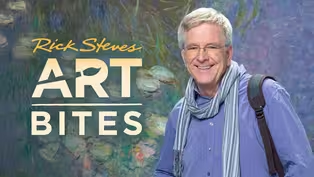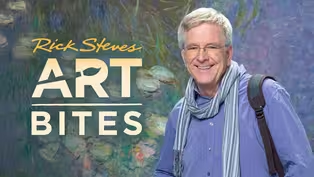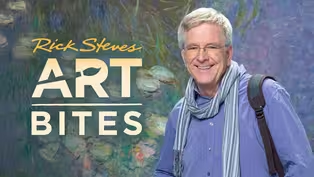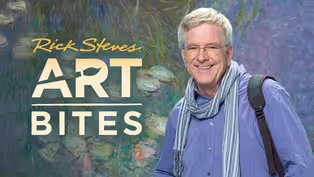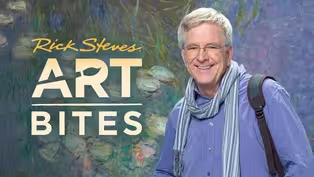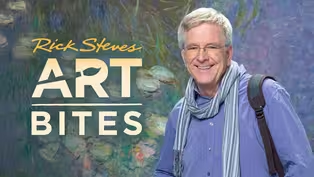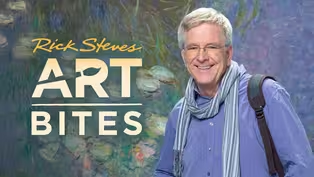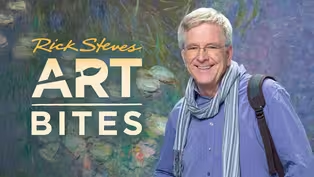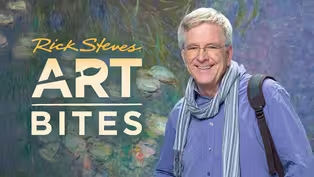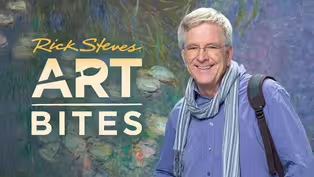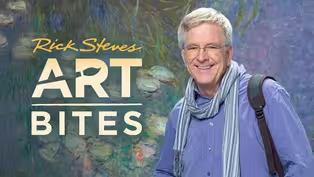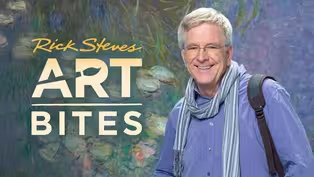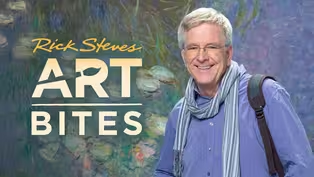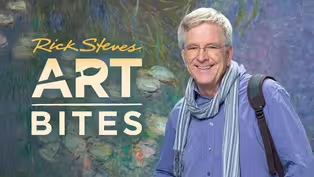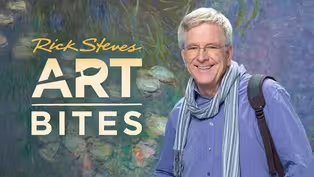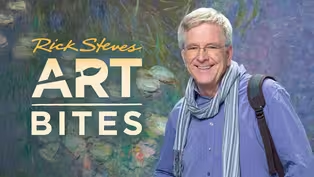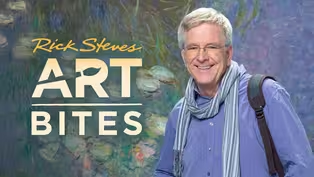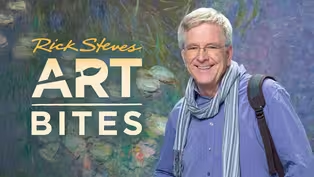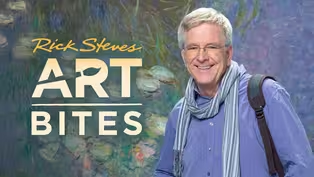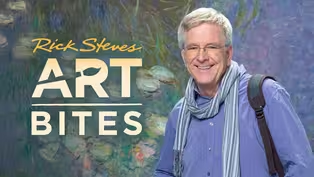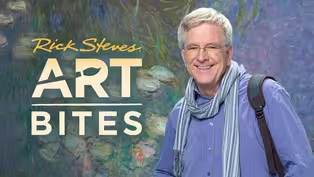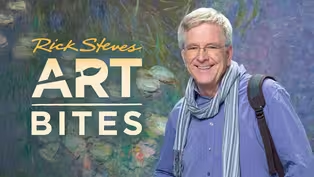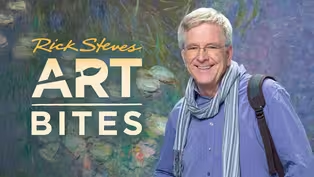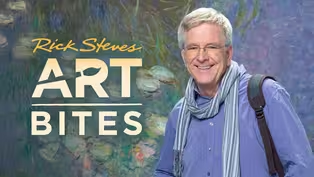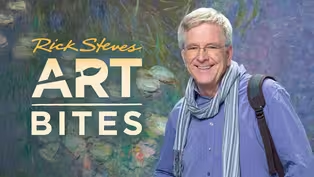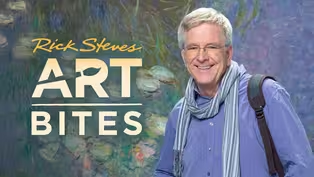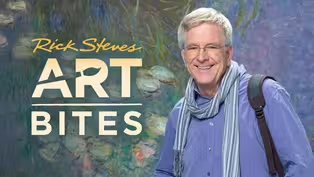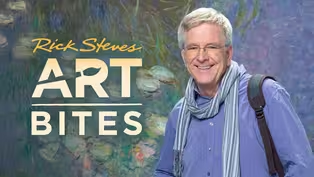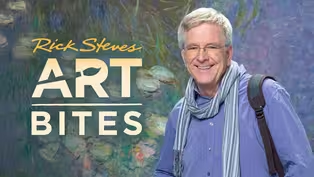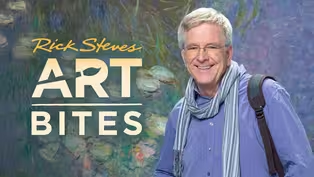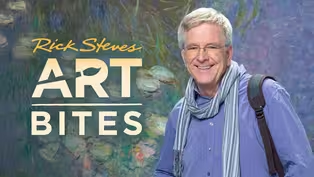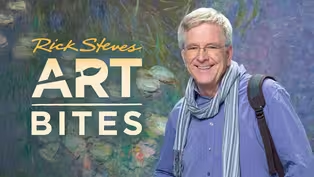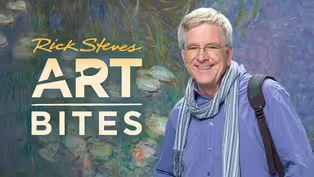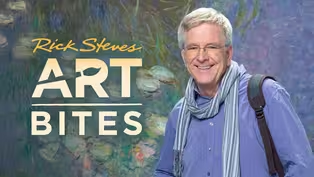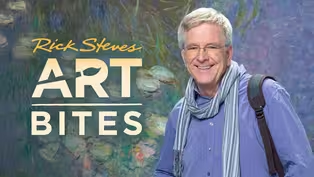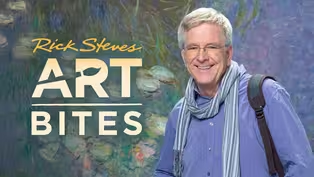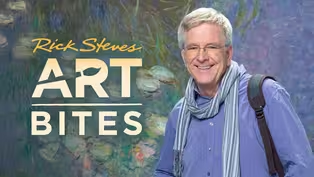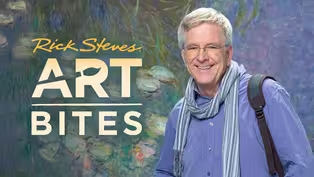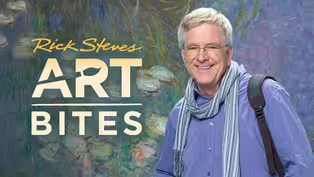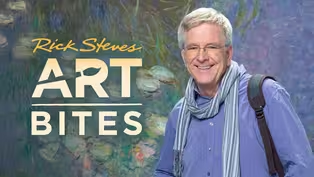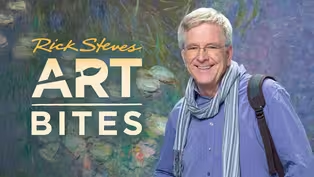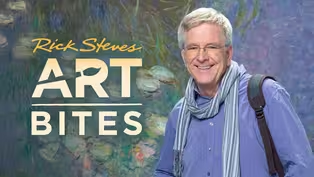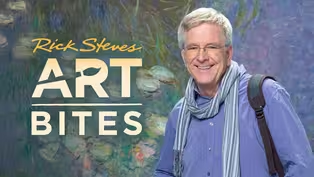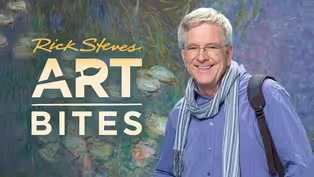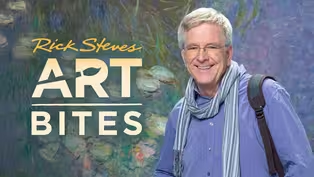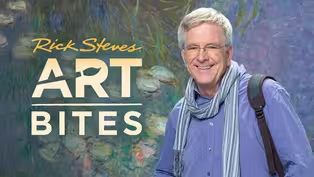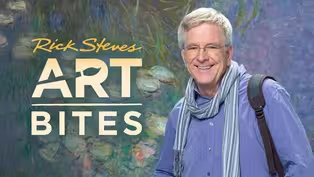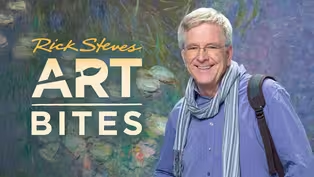Rick Steves' Europe
Art Bites 150: Michelangelo
Clip | 6m 53sVideo has Closed Captions
Michelangelo sculpted “David,” painted the Sistine Chapel ceiling, and designed St. Peter’s.
Michelangelo, another multi-talented “Renaissance man” was a world-class sculptor, painter, and architect. He sculpted “David” and the “Pietà,” painted the Sistine Chapel ceiling, and designed St. Peter’s Basilica. I rest my case.
Problems playing video? | Closed Captioning Feedback
Problems playing video? | Closed Captioning Feedback
Distributed nationally by American Public Television
Rick Steves' Europe
Art Bites 150: Michelangelo
Clip | 6m 53sVideo has Closed Captions
Michelangelo, another multi-talented “Renaissance man” was a world-class sculptor, painter, and architect. He sculpted “David” and the “Pietà,” painted the Sistine Chapel ceiling, and designed St. Peter’s Basilica. I rest my case.
Problems playing video? | Closed Captioning Feedback
How to Watch Rick Steves' Europe
Rick Steves' Europe is available to stream on pbs.org and the free PBS App, available on iPhone, Apple TV, Android TV, Android smartphones, Amazon Fire TV, Amazon Fire Tablet, Roku, Samsung Smart TV, and Vizio.
Providing Support for PBS.org
Learn Moreabout PBS online sponsorshipBy the year 1500, what had begun in Florence a century earlier was coming to a peak: an exciting time known as the High Renaissance.
Italy was thriving, with a huge appetite for art.
Artists who in earlier times had toiled as anonymous craftsmen were now famous and well-paid.
Three towering artists— all with Florence connections— brought the Renaissance to its culmination and then helped spread it throughout Italy and beyond: Leonardo, Michelangelo, and Raphael.
More than any previous artist, Michelangelo pioneered the idea that art was not just a job, but a unique personal statement, an expression of his inner passion.
Even as he worked for the Church and wealthy patrons, his vision was always his own.
As a multi-talented “Renaissance Man”, Michelangelo made his mark as a world class sculptor█ painter█ and architect.
As an architect, he designed and created this memorial chapel for his patrons, the Medici— a harmonious ensemble of innovative architecture... tombs... and sculpture.
As a sculptor, Michelangelo believed his figures were already divinely created within the stone█ he was simply chiseling away the excess.
These rough and unfinished statues seem to be struggling, like prisoners, to free themselves from the marble.
They show the Renaissance love of the body as, with his chisel, Michelangelo reveals these compelling figures.
Barely 25 years old, Michelangelo established his genius by sculpting this Pietà, adored by centuries of pilgrims.
With powerful realism, Michelangelo made it clear to the faithful: Jesus is dead.
The theological point of this work: He gave his life for our salvation.
Mary█s crumpled robe accentuates Christ█s smooth body— helping make hard stone look soft as skin.
Great art that delivers an emotional punch, is no accident█that█s its purpose and it does so by design.
Next, Michelangelo took on the epic-scale statue of David— displayed today as if the high altar in a temple to Humanism.
The young shepherd who slew the giant turned down the armor of the day, arming himself only with stones.
He throws his sling over his shoulder and goes out to face the giant.
Michelangelo catches David at the exact moment when he█s sizing up the enemy, and thinks to himself, “I can take this guy.” This statue has come to symbolize that, with the Renaissance, humankind could slay the giant of medieval ignorance and superstition.
David█s over-sized right hand was no accident█ it represented how this shepherd boyempowered by Godcould slay the giant█ and how Florence could rise above its rival city states.
When you look at David, you█re looking at Renaissance man.
Artists now made their point using realism.
They did this by merging art and science.
For instance, Michelangelo actually dissected human corpses to better understand anatomy.
This humanism was not anti-religion.
Now, people realized that the best way to glorify God was not to bow down in church all day long, but to recognize their talents and to use them.
Michelangelo established himself as Europe█s greatest sculptor.
And he was a pretty darn good painter as well.
This Holy Family— Michelangelo█s only surviving easel painting-- offers a closer look at his mastery as a painter.
The solid, statuesque people posed in a sculptural group show why many call Michelangelo “a sculptor with a paint brush.” And the Greek-style nudes in the background are a reminder of the artist█s humanist and classical orientation.
He created perhaps his greatest work in the pope█s Sistine chapel.
Michelangelo depicted no less than the entire history of the Christian world, from the Creation█ to the first people█ and, much later, to the final event in history, the awe-inspiring Last Judgment.
Michelangelo painted God busy creating from every conceivable angle.
And the centerpiece: the central act of creation█ God passing the divine spark of life to his greatest masterpiece— you and me.
As Michelangelo aged, he sculpted this Pieta for his own tomb.
The broken body of the crucified Christ is tended by his grieving mother Mary and his friends.
Jesus is larger than life, with a heavy lifeless body that zig-zags down to the grave, again█ this accentuates that theological point— Jesus is dead.
Nicodemus is actually a self-portrait of Michelangelo— now an old man.
After spending a lifetime bringing stone to life, now Michelangelo reflects tenderly upon his savior— looking down thoughtfully at what he feared might be his final creation.
But Michelangelo saved his most majestic work for last.
Now, as a master architect, he designed the dome of the greatest church in Christendom, St. Peter█s in Rome.
The dome rises up from the church█s heart, the tomb of St. Peter— taller than a football field on end.
Enjoying the commanding view from the top, is a reminder of how the cultural explosion of the Italian Renaissance was destined to reverberate far and wide.
Video has Closed Captions
Clip | 1m 29s | What began as tagging and street graffiti has evolved into a new art form. (1m 29s)
Art Bites 195: Social Realism, the Art of Communism
Video has Closed Captions
Clip | 1m 51s | The art of Communism diligently promoted the heroic symbols of the state as propaganda. (1m 51s)
Art Bites 194: Picasso’s "Guernica"
Video has Closed Captions
Clip | 2m 54s | With the large Cubist-inspired painting, Picasso put a human face on “collateral damage.” (2m 54s)
Video has Closed Captions
Clip | 1m 36s | With heavy outlines and brilliant colors, Chagall celebrated nature and its creator. (1m 36s)
Art Bites 192: Surrealism and Salvador Dalí
Video has Closed Captions
Clip | 2m 34s | Surrealists explored the subconscious painting everyday images in jarring juxtapositions. (2m 34s)
Art Bites 191: Edvard Munch and Expressionism
Video has Closed Captions
Clip | 2m 6s | Expressionism captured emotions, trauma, and cynicism with distorted and garish works. (2m 6s)
Art Bites 190: Romanticism and Romantic Era Painting
Video has Closed Captions
Clip | 2m 43s | Epic, melodramatic canvases, images that stir the emotions, and an embrace of nature. (2m 43s)
Art Bites 189: Pablo Picasso: Cubism, "Guernica," and Much More
Video has Closed Captions
Clip | 5m 14s | Picasso invented Cubism, captured the horror of warfare, and found freedom in abstraction. (5m 14s)
Video has Closed Captions
Clip | 1m 35s | Gustav Klimt, with paintings like “The Kiss” captured a simmering hedonism in Vienna. (1m 35s)
Art Bites 187: Toulouse-Lautrec
Video has Closed Captions
Clip | 1m 46s | Toulouse-Lautrec painted the turn-of-the-century bohemian scene on Paris’ Montmartre Hill. (1m 46s)
Art Bites 186: Modern Art and the Isms of the 20th Century
Video has Closed Captions
Clip | 4m 31s | 20th-century art was a parade of isms: Fauvism, Expressionism, Cubism, Surrealism. (4m 31s)
Art Bites 185: Art Nouveau, Mucha, and Gaudí
Video has Closed Captions
Clip | 5m 3s | Art Nouveau went organic with willowy maidens, melting eaves, and an embrace of nature. (5m 3s)
Art Bites 184: Vincent van Gogh
Video has Closed Captions
Clip | 3m 1s | Van Gogh’s wild brush strokes and vivid colors portrayed the world he felt so intensely. (3m 1s)
Art Bites 183: The Post-Impressionists: Seurat, Cézanne, Gauguin, Van Gogh
Video has Closed Captions
Clip | 3m 51s | Dots, slabs, primitive Tahitian scenes, wild brush strokes, and vivid colors. (3m 51s)
Art Bites 182: Claude Monet and His Waterlilies
Video has Closed Captions
Clip | 2m 10s | The true subject of Monet’s “Waterlilies” is the changing reflections on the pond. (2m 10s)
Art Bites 181: Rodin, Impressionism in Sculpting
Video has Closed Captions
Clip | 1m 27s | Auguste Rodin brought Impressionism to stone with iconic statues like “The Thinker.” (1m 27s)
Art Bites 180: Impressionism, Monet, Renoir, and Degas
Video has Closed Captions
Clip | 6m 20s | The Impressionists revolutionized art with a focus on nature: light, shadow, and color. (6m 20s)
Art Bites 179: Northern Baroque Painting: Hals, Steen, Vermeer
Video has Closed Captions
Clip | 4m 53s | Hals, Steen, Vermeer painted slices of regular life and group portraits of city bigwigs. (4m 53s)
Art Bites 178: Baroque Music, Bernini for Your Ears
Video has Closed Captions
Clip | 2m 5s | This mini piano concert demonstrates how Baroque music can be like Bernini for your ears. (2m 5s)
Art Bites 177: Rubens, a Master Painter of the Northern Renaissance
Video has Closed Captions
Clip | 3m 28s | Rubens painted mythic battles, Catholic miracles, bloody hunts, and “Rubenesque” women. (3m 28s)
Video has Closed Captions
Clip | 1m 53s | Gritty realism, stark lighting, and drama gave Caravaggio’s art an emotional punch. (1m 53s)
Art Bites 175: Bernini and Baroque Sculpture
Video has Closed Captions
Clip | 5m 37s | Rome was Bernini’s gallery where you can see his squares, fountains, and finest statues. (5m 37s)
Art Bites 174: Baroque Art as Propaganda
Video has Closed Captions
Clip | 3m 29s | Baroque art was propaganda for the state or for the Church. (3m 29s)
Art Bites 173: Baroque Art, the Catholic Church, and the Virgin Mary
Video has Closed Captions
Clip | 3m 42s | Pro-Vatican Baroque featured big canvases, dramatic statues, and exuberant architecture. (3m 42s)
Art Bites 172: The Reformation and the Baroque Age
Video has Closed Captions
Clip | 5m 6s | The roots of Baroque go back to the 1500s when it told the story of the religious wars. (5m 6s)
Art Bites 171: Neoclassical Art, the Age of Revolution, and Napoleon
Video has Closed Captions
Clip | 5m 6s | The French Revolution came with art that celebrated liberty, equality, and brotherhood. (5m 6s)
Art Bites 170: Neoclassical Art and Architecture, the Age of Enlightenment
Video has Closed Captions
Clip | 5m 49s | Neoclassical was a stern, no-frills style that celebrated a new age of science and reason. (5m 49s)
Art Bites 169: Rococo Art and Architecture, Baroque Gone Wild
Video has Closed Captions
Clip | 2m 7s | Rococo art featured aristocrats playing in their Baroque palaces and bucolic backyards. (2m 7s)
Art Bites 168: Royal Palaces of the Baroque Age and Versailles
Video has Closed Captions
Clip | 5m 36s | Versailles, with its heavenly painted ceilings, was the ultimate Baroque palace. (5m 36s)
Art Bites 167: Royal Portraits and Velázquez
Video has Closed Captions
Clip | 3m 33s | Painters, such as Velázquez, were paid to make royals look more divine than they were. (3m 33s)
Art Bites 166: Rembrandt, The Great Dutch Master
Video has Closed Captions
Clip | 3m 51s | Rembrandt earned a living painting and told Bible stories with a subtle mastery of drama. (3m 51s)
Art Bites 165: Sandro Botticelli
Video has Closed Captions
Clip | 2m 24s | Botticelli painted big colorful celebrations of the Renaissance like a fertile springtime. (2m 24s)
Art Bites 164: The Medici Family, Patrons of the Florentine Renaissance
Video has Closed Captions
Clip | 3m 27s | The Medici family nurtured and employed the great Florentine Renaissance artists. (3m 27s)
Video has Closed Captions
Clip | 2m 6s | A humble monk, Fra Angelico frescoed exquisite sacred scenes for his monastery. (2m 6s)
Art Bites 162: Early Renaissance Painting: Giotto, Masaccio, Fra Angelico
Video has Closed Captions
Clip | 5m 26s | These painters brought art from medieval two-dimensional to more life-like 3-D. (5m 26s)
Art Bites 161: Donatello and Early Renaissance Statues
Video has Closed Captions
Clip | 3m 12s | The sculptor Donatello gave his proud statues unprecedented realism and emotion. (3m 12s)
Art Bites 160: Renaissance Artists: Ghiberti, Brunelleschi, Donatello
Video has Closed Captions
Clip | 4m 58s | Florence, home of the Renaissance, was also home to three early artistic heroes. (4m 58s)
Art Bites 159: The Renaissance Defined
Video has Closed Captions
Clip | 3m 30s | For two centuries, the Renaissance was an explosion of secular learning, art, and culture. (3m 30s)
Art Bites 158: Hieronymus Bosch and "The Garden of Earthly Delights"
Video has Closed Captions
Clip | 2m 7s | Bosch’s three-paneled masterpiece takes you from earthly delights to a nightmarish Hell. (2m 7s)
Video has Closed Captions
Clip | 2m 6s | Weyden’s exquisitely detailed Last Judgment is filled with symbolism. (2m 6s)
Art Bites 156: Pieter Brueghel the Elder for a Slice of Flemish Life
Video has Closed Captions
Clip | 2m 14s | Brueghel was a master of slice-of-life scenes capturing country folk at play. (2m 14s)
Art Bites 155: Oil Painting, an Improvement over Tempera
Video has Closed Captions
Clip | 2m 9s | Oil paints freed artists like Jan van Eyck, Raphael, and Leonardo to raise the bar. (2m 9s)
Art Bites 154: The Northern Renaissance, Flemish Painting, and Jan van Eyck
Video has Closed Captions
Clip | 3m 10s | Flemish paintings were happy slice-of-life scenes, feel-good, and affordable. (3m 10s)
Art Bites 153: Albrecht Dürer, Realism, Humanism, and the Master Engraver
Video has Closed Captions
Clip | 1m 54s | Albrecht Dürer’s meticulous attention to detail was ideal for his work as an engraver. (1m 54s)
Art Bites 152: El Greco and Mannerism
Video has Closed Captions
Clip | 4m 8s | El Greco painted supernatural visions, faces that flicker, and otherworldly altarpieces. (4m 8s)
Art Bites 151: The Age of Discovery: Portugal and Spain
Video has Closed Captions
Clip | 5m 52s | Portugal had lacy Manueline architecture and Spain’s emperor had far-flung tastes. (5m 52s)
Video has Closed Captions
Clip | 6m 53s | Michelangelo sculpted “David,” painted the Sistine Chapel ceiling, and designed St. Peter’s. (6m 53s)
Video has Closed Captions
Clip | 3m 36s | Raphael’s sweet Madonnas set a new standard in High Renaissance painting. (3m 36s)
Art Bites 148: Building a Gothic Cathedral Out of 13 Tourists
Video has Closed Captions
Clip | 2m 2s | Gothic church design is best illustrated by building one with 13 travelers. (2m 2s)
Art Bites 147: Gothic Church Architecture, the Pointed Arch and More Light
Video has Closed Captions
Clip | 6m 51s | The Gothic Age was famed for its towering churches filled with glorious stained-glass windows. (6m 51s)
Providing Support for PBS.org
Learn Moreabout PBS online sponsorshipSupport for PBS provided by:
Distributed nationally by American Public Television
